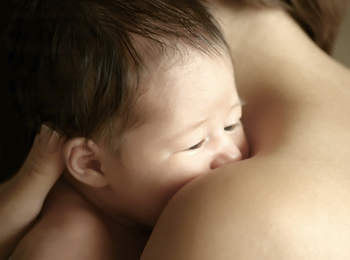Skin-to-skin care now in place at the MUHC
 The McGill University Health Centre (MUHC) has been working diligently over the past two years to put into place best practice recommendations given by the World Health Organisation and UNICEF. This includes placing the newborn in skin to skin contact with its mother immediately after birth or as soon as medically possible. Skin to skin involves placing the naked baby, chest down, on their mommy’s bare chest for as long as mom and child are comfortable and safe in doing so.
The McGill University Health Centre (MUHC) has been working diligently over the past two years to put into place best practice recommendations given by the World Health Organisation and UNICEF. This includes placing the newborn in skin to skin contact with its mother immediately after birth or as soon as medically possible. Skin to skin involves placing the naked baby, chest down, on their mommy’s bare chest for as long as mom and child are comfortable and safe in doing so.
In the past, the standard practice was the baby would be taken away to be weighed right after birth, but now the MUHC waits for an hour and/or for the first breastfeed to occur. “We are the only species in the world to remove the baby from its mother,” says Stephanie Dorey, MUHC nurse clinician for the Baby Friendly Initiative Program. “With skin to skin, we are getting back on track.”
According to Luisa Ciofani, MUHC interim associate director of Nursing for the Women’s Health Mission, skin to skin offers many advantages to baby and mom.
“It also gives more power back to the parents,” says Ciofani. “With the skin–to–skin initiative, our healthcare workers are now being as hands off as possible. For instance, we used to take the baby and put him or her under the warmer right after birth. But the mom’s body does a much better job, so, if medically possible, the baby now stays with mom. If mom is unavailable, baby can be placed in skin to skin with dad. Fathers are encouraged to participate in this initiative.”
There has been ongoing training about skin to skin for all nurses, physicians, residents, and anaesthesiologists and everyone is getting on board. “Even with c-sections, staff are finding ways to place the baby skin to skin on the mom,” says Dorey. “For example, the child is placed across the mom’s chest instead of lengthwise due to the lack of available space on her chest because of the surgical drapes.”
Providing skin-to-skin contact in the operating room is extremely valuable for many reasons, for example, babies who are not delivered vaginally are not exposed to the mom’s normal bacteria and the temperature in the OR theatre is quite cold, therefore placing the baby on mom is the best way to increase body temperature and transition to extrauterine life. Moms of babies who are admitted to the NICU are highly encouraged to do skin to skin (referred to as kangaroo care) even intubated babies are capable, and can do so, under the nurses’ supervision and guidance.
A patient teaching tool about skin to skin, which is placed in all maternity clinics, on the post-partum floor and in the birthing centre, also supports the initiative.
Today, skin-to-skin care with new families is documented to take place, at birth or very soon after, 90 per cent of the time at the MUHC. “You rarely find warmers anywhere anymore but in the birthing centre, and they are only there for safety reasons,” says Dorey. “We are really making progress.”
It helps baby:• Stabilize body temperature, heart rate, oxygen level, blood pressure and blood sugar • Be calm and cry less • Bond easily with mother • Trigger feeding behaviours • Maintain weight after birth • Latch on to breast more easily • Breastfeed exclusively • Sleep better • Promote colonization of skin with bacteria, which helps build a natural immunity • Adapt to life outside the womb | It helps mom:• Welcome baby in a closer more comforting way • Adjust her body temperature for baby • Learn to respond to baby’s needs • Recognize when baby is ready to feed • Develop a deeper bond with baby • Begin breastfeeding • Produce more milk • Reduce risk of postpartum blues |
